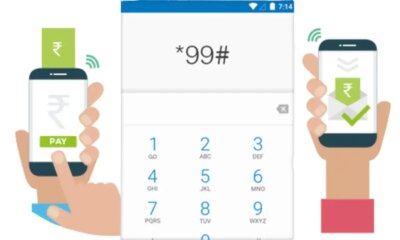Tech
Young Indians Favor Chatting Over Audio Calling: Report

Young Indians would rather chat when they wish to communicate instead of calling people up over the phone, said a study by Bobble AI, a conversation media marketing platform. Conducted by Nielsen, the research studied Gen Z and millennials who said chatting over various messaging apps was an easy and fun way of communication. Half of the respondents (50%) Favor chatting over audio calling (37%) and video calling (13%).
Young Indians Favor Chatting Over Audio Calling
The study is based on responses from 900 consumers aged between 18 and 40 years across five metros and six non-metro cities. Bobble AI is a homegrown digital media marketing startup backed by investors like SAIF Partners, Affle, Sachin Bansal, Binny Bansal and Deep Kalra.
Majority of respondents (83%) said that they chat multiple times during a day. Around seven in 10 respondents said that their chatting activity has increased in the last six months and shall remain the same or increase further in the next six months.
Sameer Malhotra, head (mental health and behavioural science) at Max Super Specialty Hospital, Delhi, said, chatting enables multi-tasking, saves time and also provide laxity to young users who can choose whom they wish to converse with at that point of time.
“Millennials are also into high-pressure jobs and conversing over a call is not a possibility. So, whenever one catches a breather they prefer to engage with friends over text. Emojis are used to add emotional expression to the messages,” he added.
Ankit Prasad, co-founder and CEO, Bobble AI, said that speed, expression and convenience has contributed to the popularity of chatting as a format.
“Lockdown has further aided the growth of this format. Chatting allows user to chat with a multiple number of people at one time through group chats. Chatting has also facilitated a behavioural shift where people have started sending a text asking for a call respecting others time and convenience,” he added.
The findings of the study highlight that emojis (68%) are the most used and shared chatting format across demographics. However, the affluent young Indians tend to use stickers and GIFs more. This could be attributed to the fact that users in New Consumer Classification System (NCCS) B category have low-end smartphones or feature phones in which stickers/GIFs formats are not well-supported. NCCS A (54%) score significantly higher than NCCS B (38%) in using Emoji’s as well for almost every time they chat.
In terms of gender, females (60%) score significantly higher than males (45%) in using emojis for almost every time they chat.
Delhi-based Riddhi Bakshi, 19, prefers using GIFs than typing a full-fledged message while chatting. She says it is ‘fun’ and way more convenient. “I’m talking to multiple people at one point of time and typing long messages can be tiresome. GIFs are way more fun, save time and convey my exact emotions that words can’t. My friends also exchange GIF’s which have our favourite actors, memes and TV series characters which is quite cool,” she added.
While Gen Z uses emojis, stickers and GIFs because they are fun to use and express oneself better, millennials said that they make messages easier to understand and one has to use fewer words. These chatting formats also make messages real and personal. Emojis are more likely to be used for expressing an emotion while stickers and GIFs are used for sending best wishes on birthdays, festivals and discuss trending topics like IPL, elections.
The awareness about re-sharing (an emoji/sticker which is not on one’s library but sent by someone on chat) is similar across formats however the likelihood of emojis (51%) being reshared is higher than stickers (33%) and GIFs (26%).
The study also stated that three in four people are likely to use a branded sticker over an unbranded sticker giving brands an excellent opportunity to be a part of everyday conversation of consumers and advertise their products.
Around 72% respondents said that they preferred sharing branded stickers while chatting. They are likely to use branded stickers to ask for shopping, coffee, say thank you with chocolate and vacation related conversations with friends. To be sure, brands are shifting to conversation media marketing to engage with Gen Z and millennials who do not engage with ads on traditional media platforms like television. Bobble AI said that it has worked with brands across categories including Cadbury Silk, ITC, Kingfisher, V-Guard air coolers and Nescafe among others that have leveraged conversation media marketing to engage with young consumers, young indians favor chatting over audio calling .














